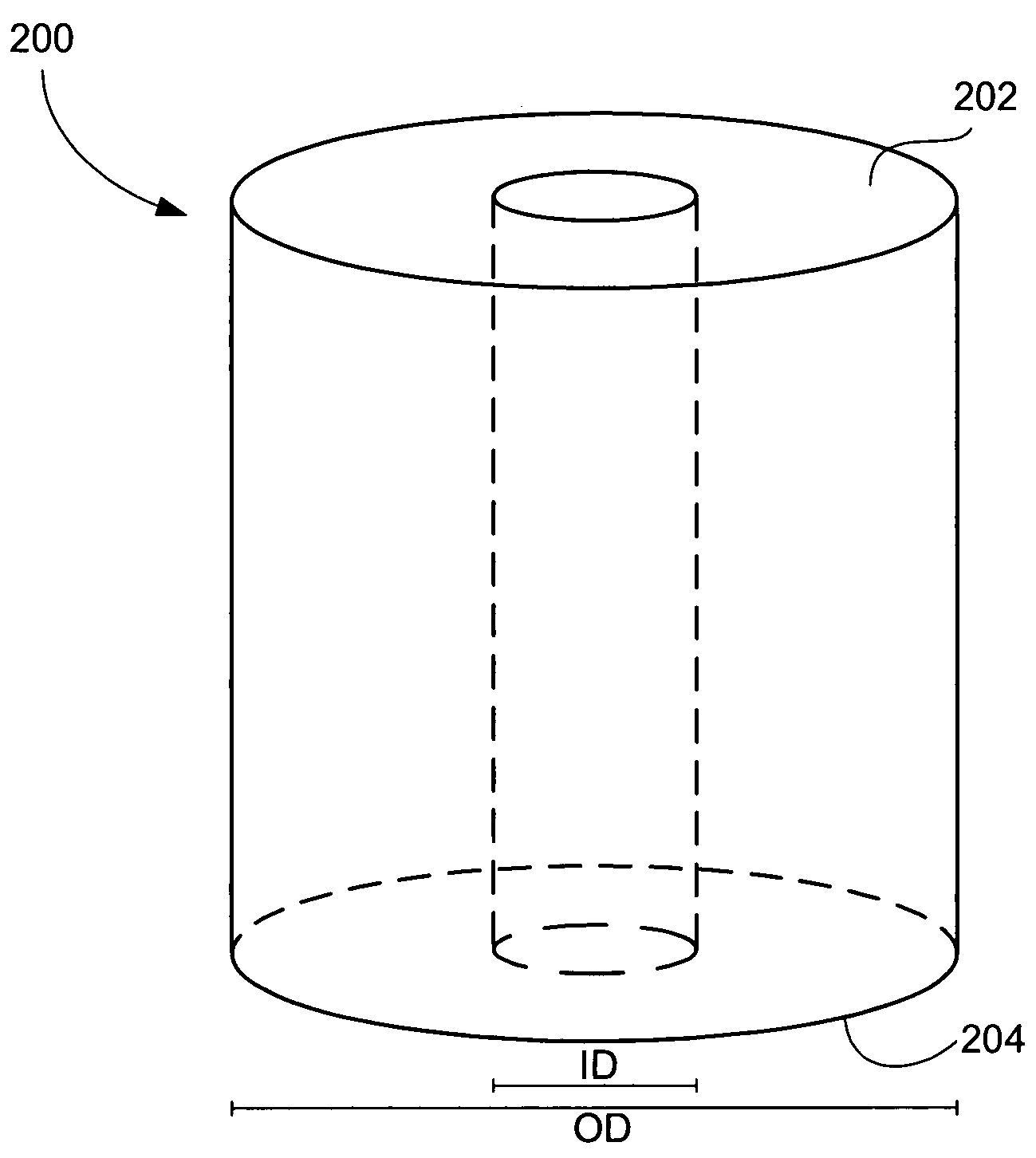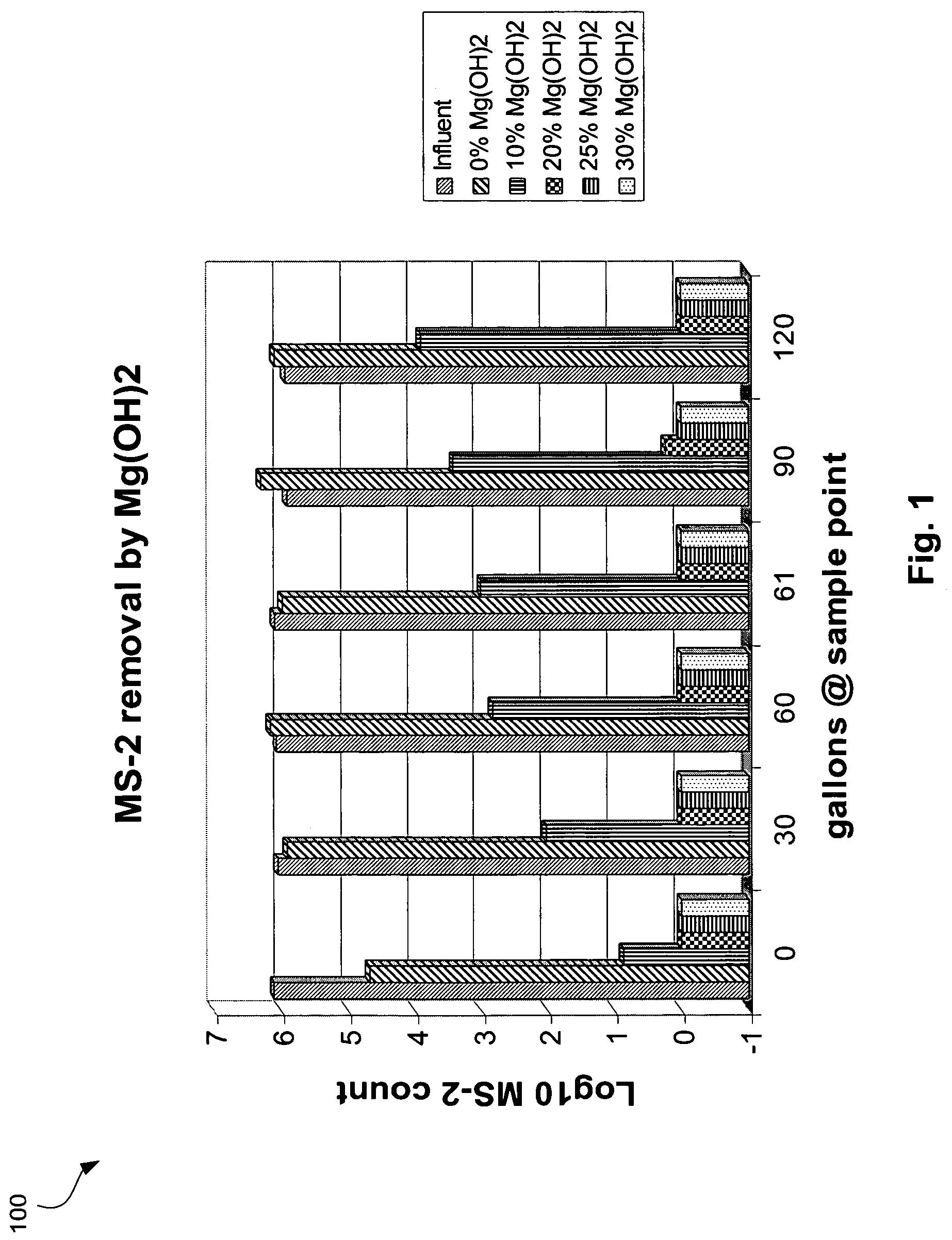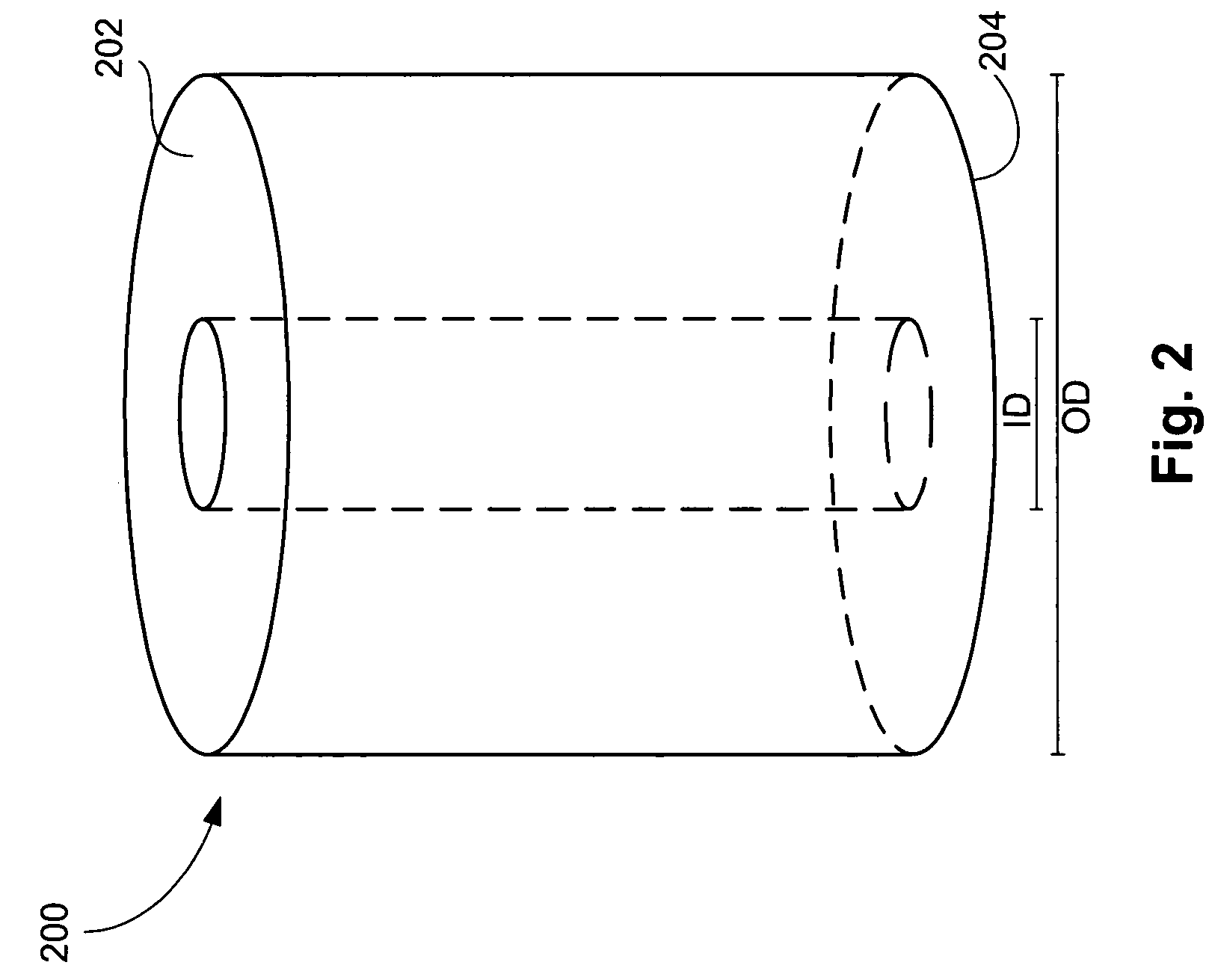Microorganism-removing filter medium having high isoelectric material and low melt index binder
a filter medium and microorganism technology, applied in the field of filtration materials, can solve the problems of bioterrorism, waterborne giardiasis, and serious health risks of fecal coliforms or i>e. coli/i>), and achieve the effects of preventing biofilm growth, prolonging the life of the filter, and improving the antimicrobial effect of the filter
- Summary
- Abstract
- Description
- Claims
- Application Information
AI Technical Summary
Benefits of technology
Problems solved by technology
Method used
Image
Examples
example 1
[0084]Following is an example of a preferred procedure for forming a porous block of filter medium. Granular activated carbon with a mean particle size (outer diameter) of about 100 microns is mixed with particles of an ultra high molecular weight polyethylene binder (and / or other binder) having a mean particle size in the range of about 120 to 140 microns, a melt index of less than 1, and a melting temperature of about 135° C. Particles of magnesium hydroxide (and / or other inorganic material) are blended into the mixture of carbon and binder. The preferred particle size of the magnesium hydroxide is in the range of about 5 to about 14 microns. See Table 6 and FIG. 5 for illustrative compositions of the mixture. The mixture of magnesium hydroxide, carbon, and binder are thoroughly mixed in a blender or other suitable mixing device for a period of time sufficient to create a substantially uniform dispersion of materials in the mixture.
[0085]The blended mixture is heated and compresse...
example 2
[0087]Following is an example of a preferred procedure for forming a porous cylindrically-shaped block of filter medium. Particles of magnesium hydroxide, activated carbon, and binder are blended into a mixture. The blended mixture is heated and compressed in a stainless steel mold having the desired shape. The material in the mold is heated to about 473 degrees F (245° C.) for about 40 minutes.
[0088]The ends of the block can be capped using any suitable adhesive, such as polymeric glue. The block can then be placed in a housing that directs influent water to an outer periphery of the block so that the water passes through the block into the center chamber of the block and is then expelled through one of the end caps as filtered water. Note that the flow through the filter may also be reversed.
[0089]FIG. 4 is a chart 400 showing the reduction of microorganisms using a filter medium such as the one described in Example 2 with about 30 weight percent magnesium hydroxide, about 25 weig...
examples 3-5
[0090]The following table illustrates the results of experiments testing the removal of bacteriophage MS-2 by cylindrical filters with different concentrations of carbon, binder and magnesium hydroxide. The influent liquid for the 30 and 90 gallon runs was water containing a 4.3 log (1×104.3 PFU / ml) concentration of MS-2, where PFU=Plaque Forming Units. The influent liquid for the 120 gallon runs was water containing a 4.5 log (1×104.5 PFU / ml) concentration of MS-2. The filter blocks themselves were about 75 g carbon blocks of the composition shown with dimensions of about 2.94 inches in length, about 1.84 inch outer diameter and about 0.5 inch inner diameter tested on a faucet mount system at 60 PSI.
Table 7
Removal of Bacteriophage MS-2 by Cylindrical Filters with Different Concentrations of Magnesium Hydroxide
[0091]
TABLE 7Removal of bacteriophage MS-2 by cylindrical filters with differentconcentrations of magnesium hydroxideMS-2 log 10 removal30 gal90 gal120 galA37.5% magnesium>4.3...
PUM
| Property | Measurement | Unit |
|---|---|---|
| Fraction | aaaaa | aaaaa |
| Pore size | aaaaa | aaaaa |
| Pore size | aaaaa | aaaaa |
Abstract
Description
Claims
Application Information
 Login to View More
Login to View More - R&D
- Intellectual Property
- Life Sciences
- Materials
- Tech Scout
- Unparalleled Data Quality
- Higher Quality Content
- 60% Fewer Hallucinations
Browse by: Latest US Patents, China's latest patents, Technical Efficacy Thesaurus, Application Domain, Technology Topic, Popular Technical Reports.
© 2025 PatSnap. All rights reserved.Legal|Privacy policy|Modern Slavery Act Transparency Statement|Sitemap|About US| Contact US: help@patsnap.com



